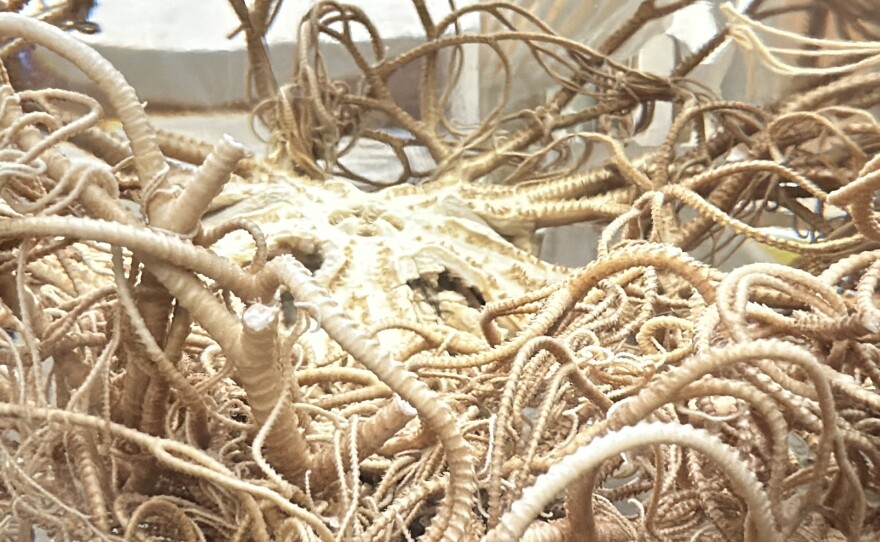Yeti crabs, shrimp, sea worms and starfish. And that’s just to name a few.
They live between 1,800 and 3,600 meters below the Pacific Ocean off the shores of Costa Rica. A team of scientists, led by Scripps Institution of Oceanography, captured these creatures on film and in hand.
“For example, in this jar is a basket star. You’ll see it’s got many arms and each one is branched several times. It sort of looks like a beautiful woven basket. This is one example from Costa Rica,” said Charlotte Seid, as she showed me around the Benthic Invertebrate Collection, housed at Scripps Oceanography on the UC San Diego campus.
It’s a huge collection of sea specimens that Seid manages, and it’s where many of the aquatic animals found off Costa Rica ended up.
Seid was also one of the voyagers to visit the seafloor in a three-man submersible vessel. Seid said Costa Rica is known for its hot springs and volcanoes and beneath the sea the equivalent are methane seeps.

Submersible dives over the years have identified hundreds of species near Costa Rica’s seeps, and many of those creatures had been previously unknown.
The deep ocean floor is so dark there’s no plants and no photosynthesis. But where seeps and vents are found, chemicals and minerals from them interact with underwater bacteria that become microbial food.
It’s a process called chemosynthesis and it creates the bottom of the food chain for sea animals.
Along with crabs and shrimp, on the seafloor near the seeps you find tiny creatures like chitons. Seen in a little bottle in the Scripps invertebrate collection it looks like a deep sea armadillo.
“There are also larger animals. Sea cucumbers, sea stars, brittle stars,” Seid said.
And, of course, there are plenty of tubeworms and clams.
“If you’re down there in a submersible, you see tubeworms and clams and you know you’re at a methane seep,” she added.

If the dark bottom of the ocean is like a desert, methane seeps are oases, nourishing a diversity of creatures.
Seid went down there twice in a submersible. The biologists named it Alvin. She said the deep ocean is very peaceful. In addition to the manned vessel, scientists used a remotely operated watercraft with cameras.
Now, the work of identifying what may be many new species will begin. After discovering what may be a new form of life, scientists need to describe it to add it to the record of life on earth.
“When you describe a new species we formally declare it to the world, like writing a birth certificate. You have to give it a name,” Seid said. “You have to say who it’s closely related to. Where did you find it?”
Methane seeps, by the way, are pretty common. In fact, Seid said they are also found a few hours off the coast of Del Mar and La Jolla.





